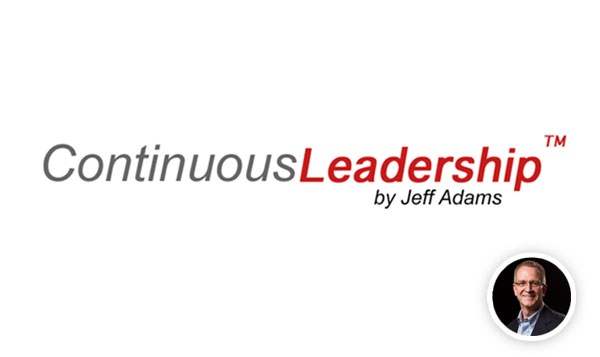Continuous Improvement is all the rage these days. Seems like almost every industry is talking about it in some form or fashion. Some businesses are embracing methodologies like Lean or Six Sigma. Other businesses use “continuous improvement” more as buzz words, as if just saying them will make them more competitive. But Continuous Leadership? That’s not a term used very often, if at all.
It’s a term people should start to understand and use. Every organization’s leadership wants to be competitive in their market, and wants their people to constantly improve (or is that continuously improve) their performance. If everyone else in the organization has an expectation to continuously improve themselves and their performance, then should there be any less expectation of the leadership? How else is the organization as a whole going to improve, driving towards operational excellence, if the leaders aren’t leading the way on continuous improvement?
Continuous Leadership isn’t merely managers, a.k.a. leaders, working to improve themselves professionally (obtaining advanced degrees, changing jobs for experience, etc.). Continuous Leadership is the consistent, regular engagement managers have with the people within their organization, and that engagement is of a fashion that encourages the pursuit of excellence. This is having a hands-on role in the development of your people and your organization. This is not simply stating you support continuous improvement; this is taking an active role, setting the example, coaching and mentoring people so that the organization buys into the concept of continuous improvement. It’s walking the talk.
A common mistake made by leadership when they set a goal of embracing continuous improvement is they start off doing many of the right things, but fail at the most important thing. Sure, they’ll declare their support of continuous improvement, and they will have training for people, maybe even set up roles for individuals to be permanent continuous improvement assets for their organization. Processes will be mapped, procedures documented, and work instructions thoroughly filled out for everything that happens within the organization. Once everything is in place, and there have been a few wins on process improvement, leadership steps back, and expects to watch things continue on this path as if by magic. But it doesn’t.
The problem is the failure with what I earlier called the most important thing: that is sustainment. So how do you sustain your improvements? You need to treat an organization like a living organism, and this living organism needs to be constantly fed. This organism is going to grow, age, and change over time. In a business, this means technology changes, markets change, people will retire or leave your organization and have to be replaced. With all this happening, has leadership ensured regular training/refresher courses for their people? What about succession planning? People who move up in an organization, are they properly prepared for their new roles, especially if they are expected to lead others? Change is continuous, so therefore, improvement and leadership is continuous as well.
Let me provide an analogy. Look at college football, and how each team functions. The head coach has an organization that is constantly changing. Assistant coaches come and go, pursuing their career goals. Players only have a four or five year window in which they can play, but in reality they are usually only full contributors for one to three years, so turnover is constant. Throw in injuries, failing to meet academic requirements, failure to perform, and dynamics of the game changing all the time, and you have an organization in constant flux. This means the Coach has to be constantly mentoring and developing his coaches, recruiting new players every year (and maybe a few new coaches as well), teaching everyone his system for offense and defense, and promoting a particular culture that reinforces the standards and expectations for the team/organization as a whole. And let’s not forget, win games. Out of 12 games in a regular season, with all of this going on, if a coach is consistently winning seven games a year (that means 58% of the time you “get it right”), after a few years his job is likely in jeopardy. It’s a never ending process, and there is stress. Your business is no different really. Isn’t there regular turnover, changing demands, endeavors to “win?”
Continuous Leadership is about continuous engagement with your people to promote and achieve operational excellence with your organization. Unlike a college team, you can create an environment that encourages growth while retaining people, thus reducing turnover. People want to win, which means they want operational excellence. If you Continuously Lead your people, continuous improvement can, and will, become the culture.
Jeff Adams
Jeff Adams is the author of “7 Essential Skills of Leadership, How to Lead Your Organization to Operational Excellence.” Jeff holds multiple certifications in continuous improvement methodologies, including Lean, Six Sigma, and QRM. More information about Jeff and services offered can be found at www.continuousleadership.com.

